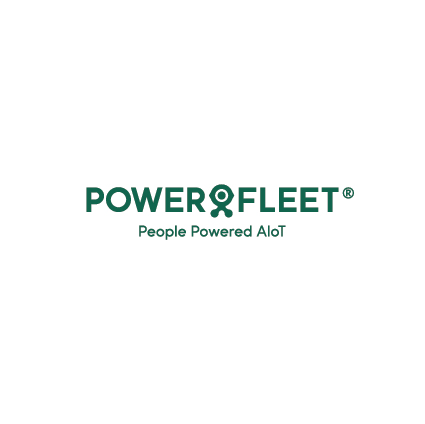Fleet operators across Europe are facing rising insurance costs, stringent regulatory requirements, and increasing pressure to demonstrate measurable safety improvements. Recent regulatory requirements, such as the mandatory installation of advanced smart tachographs compliant with EU Regulation 165/2014 – including phased deadlines that extend through July 2026 – and the EU’s Vision Zero initiative, which aims for zero road deaths by 2050, are prompting commercial vehicle operators to reassess their safety plans.
If you manage logistics, construction, utilities, or passenger transport fleets, these five critical questions will help determine if it’s time to adopt AI-powered dash camera technology.
The 5 Critical Questions
1. Do you lack real-time insight into risky driver behaviour?
Without continuous monitoring, dangerous driving patterns like fatigue, distraction, or aggressive acceleration often go undetected until an incident happens. AI-powered dash cameras send immediate alerts when risky behaviours are detected, allowing drivers to self-correct before accidents occur.
2. Are you regularly dealing with unverified insurance claims?
“Your word versus theirs” scenarios and fraudulent claims can be costly and time-consuming. Dual-facing cameras with integrated driver behaviour scoring provide objective evidence that can exonerate drivers, expedite claims processing, and prevent unnecessary payouts.
3. Are EU transport regulations becoming harder to meet?
Complex compliance requirements across multiple jurisdictions create administrative burdens and potential penalties. Integrated camera technology, combined with GPS tracking and automated reporting, simplifies compliance with evolving EU mandates.
4. Is improving driver retention and safety culture a priority?
Driver-focused safety technology that supports rather than surveils creates a positive safety culture. Real-time alerts and coaching help drivers improve their performance, build trust, and reduce turnover.
5. Are you under pressure to demonstrate ROI from fleet investments?
Fleet technology must deliver measurable returns. AI dash cameras offer quantifiable improvements in safety metrics, operational efficiency, and cost reduction, justifying the investment.
Measurable Impact of AI Dash Camera Technology
Leading European fleets implementing comprehensive AI dash camera solutions report significant improvements:
- Up to 60% reduction in collision rates through proactive risk intervention
- 84% improvement in safe driving scores via real-time coaching and feedback
- 15% reduction in fuel consumption from optimised driving behaviours
- 25% decrease in insurance premiums due to demonstrable risk reduction
- 10:1 return on investment compared to 3:1 for GPS-only tracking systems
These results demonstrate that advanced dash camera technology delivers both safety improvements and operational benefits that justify the investment.
The Regulatory Reality for EU Fleets
European fleet operators face unprecedented regulatory complexity that makes comprehensive monitoring essential:
Gen2V2 Smart Tachograph Requirements
The phased mandatory implementation of advanced Gen2V2 smart tachographs, with key deadlines extending through July 2026, depending on vehicle type and registration date, introduces enhanced monitoring features, including improved data security and location tracking. These devices require fleet operators to ensure compliance across their entire vehicle fleet in line with EU Regulation 165/2014.
EU Mobility Package Impact
The EU Mobility Package introduces significant changes to the rules governing the posting of workers, cabotage restrictions, and mandatory return requirements. Fleet operators must now maintain detailed records of driver activities and vehicle movements across EU borders, making integrated monitoring systems essential for compliance.
Vision Zero Initiative
The EU’s goal to eliminate road deaths by 2050 through its Vision Zero strategy places increasing emphasis on proactive safety measures. Commercial fleets are expected to adopt technologies that prevent accidents rather than just record them.
Corporate Sustainability Reporting Directive
The CSRD requires large companies to report on sustainability metrics, including transportation-related emissions and safety performance. Fleet operators must demonstrate measurable improvements in environmental and safety outcomes.
Technology Requirements for EU Operations
Effective AI dash camera solutions for European fleets must address specific regional requirements:
Multi-Language Support
Operations across EU member states require systems that support local languages for driver interfaces and regulatory reporting.
GDPR Compliance
Data processing and storage must comply with European privacy regulations, including driver consent mechanisms and data retention policies.
Cross-Border Functionality
Seamless operation across EU borders requires systems that can handle multiple regulatory frameworks and perform currency conversions for accurate cost reporting.
Integration Capabilities
Compatibility with existing fleet management systems and regulatory reporting tools ensures efficient implementation and ongoing operations.
The Strategic Advantage
Fleet operators who proactively adopt AI dash camera technology gain competitive advantages beyond just meeting regulations:
Insurance Benefits: Clear safety improvements lower premiums and secure better policy terms with insurers who see the value of thorough monitoring.
Client Confidence: Logistics customers increasingly demand proof of safety compliance and environmental responsibility from their transportation partners.
Operational Efficiency: Real-time data on driver behaviour and vehicle performance supports optimised route planning and maintenance schedules.
Risk Management: Early detection of safety hazards reduces the chances of incidents that could lead to regulatory fines, insurance claims, and damage to reputation.
Making the Decision
If you answered “yes” to four or more of the critical questions, your fleet probably has exposure that could be mitigated through AI dash camera technology. The combination of regulatory requirements, insurance pressures, and operational advantages makes a strong case for implementation.
European fleets that delay adopting comprehensive monitoring solutions risk falling behind competitors who demonstrate measurable safety improvements, regulatory compliance, and operational efficiency. The question isn’t whether to implement AI dash cameras; it’s how quickly you can realise the competitive advantages they offer.


